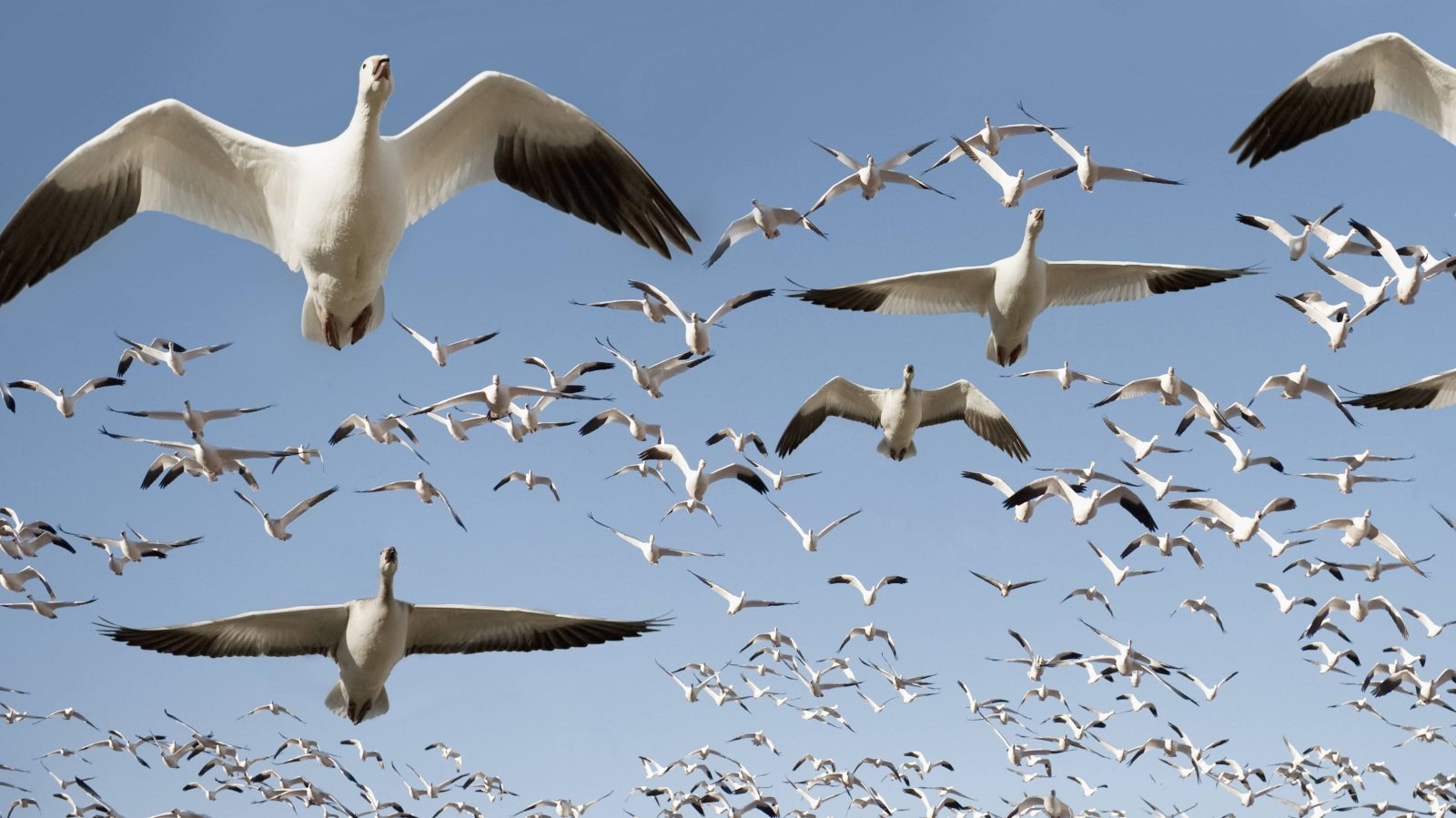Public health experts around the world are sounding the alarm as cases of a virulent strain of avian influenza called H5N1 rise in mammals. Bird flu has infected humans in the past, mostly people who work directly with diseased poultry, but there has never been widespread human-to-human transmission of the virus. If there were, it could be a catastrophe: The original H5N1 mutation had a 50 to 60 percent mortality rate in humans.
The latest outbreak of H5N1, which began in the U.S. in late 2021, has resulted in the culling of 58 million birds thus far and led to a marked increase in the cost of eggs and poultry at the supermarket. It’s America’s second major surge of H5N1 since the strain was first detected in southern China in the late 1990s — the first significant U.S. wave kicked off in 2014 and was contained mainly to the Midwest.
Since 2021, H5N1 has been found in at least 47 states. It’s circulating among wild birds, cropping up in wild mammals, and, crucially, bouncing between mink. That last development is what really has experts alarmed. More broadly, the H5N1 outbreak fits a pattern scientists have been ringing alarm bells about for years now: Climate change is throwing ecosystems out of whack and spurring the spread of disease, putting wildlife and human health at risk.
Avian flu viruses are adapted to bind to birds’ receptor cells. Humans and other mammals have some avian-like receptors, but they’re typically buried deep in the lungs. Because of this anatomical quirk, it would take an enormous load of H5N1 for one infected mammal to dredge up enough of the virus to infect another mammal. Unless, of course, the virus evolved to bind to mammalian cells in the upper respiratory tract.
That’s what appears to be happening now. Late last year, 50,000 mink on a mink farm in Spain were killed when lab tests showed the animals had contracted H5N1. A study published last month said that the virus had been spreading between the mammals, whose respiratory tracts have physiological similarities to humans’. It’s the first time such an outbreak has been documented.
“It’s something we’ve never seen,” Jean-Pierre Vaillancourt, a professor in the department of clinical sciences at the University of Montreal in Canada, said. “Am I concerned? Hell yes, I’m concerned.”
Recent isolated cases of H5N1 in various wild animal species are adding to experts’ unease. The virus has cropped up in seals, sea lions, dolphins, grizzly bears, foxes, and ferrets, many of which probably got the virus from eating infected birds. Globally, there have been six human H5N1 infections, including one death, in this surge of the virus, none of which was caused by one human giving it to another. But experts are keeping a close eye on H5N1 in case the virus continues to adapt to the point where it can easily infect humans and prompt person-to-person transmission.
“We don’t want an avian H5N1 being adapted to mammals,” Juergen A. Richt, director of the Center of Excellence for Emerging and Zoonotic Animal Diseases, told Grist. “Obviously, the next level would be humans.”
The past few years have seen an uptick in the size and pace of bird flu outbreaks. The virus has moved outside the bounds of its typical seasons, which coincide with birds’ spring and fall migrations. In the past year, H5N1 has been detected in the summer months in Italy, when high temperatures should have extinguished it, and in the depths of winter in Canada, when migrating birds are few and far between. The factors influencing these outbreaks are still largely unknown. The virus may be hanging out in the environment for longer or spreading with greater frequency and ease between birds.
Vaillancourt suspects one overarching explanation. “How come this virus is popping up in the middle of summer in the Mediterranean Sea or when it’s minus 20 or 30 in a commercial farm in Canada?” he asked. “There’s close to 80 countries in the world with this problem, we’ve never seen that before. That’s why we’re seriously looking at climate change.”
Studies have found that changing weather patterns fundamentally affect the way birds behave in ways that could influence the spread of bird flu. Rising temperatures and the seasonal changes they induce force birds to adjust their migratory patterns and converge in new combinations. Rising sea levels also affect where birds make their nests and lay their eggs, prompting species that don’t typically interact to make contact and share disease.
“In the last two to three years, we have seen a drastic change in the pattern of circulation of H5N1 virus in wild bird population, with massive outbreaks and a wider set of species involved,” Marius Gilbert, a spatial epidemiologist at the National Fund for Scientific Research in Brussels, told Grist via email. He said scientists have been able to make links between climate change and bird migration, but figuring out the ways in which climate change may be influencing the spread of avian flu is a far more complicated and difficult task.
Generally, research shows that climate change threatens to fundamentally restructure existing networks of animals, which creates conditions for diseases to find and infect new hosts, a process called “viral spillover.” More opportunities for disease sharing among a wide range of species, not just birds, may lead to more illnesses making the jump from animals into human beings, the way COVID did in 2019.
Implementing wildlife disease surveillance networks — systems local governments can use to find and identify rogue pathogens in the wild before they infect humans — can help keep these illnesses at bay. When an illness such as H5N1 is detected on a farm, nearby public health departments should be able to quickly distribute tests to farmworkers and anyone else who comes in contact with a sick animal, so that people with infections can isolate. Wealthy countries like the U.S. should also be investing heavily in an mRNA vaccine for influenza, which could be rapidly tweaked to match H5N1 if it started to spread among humans and shared with the rest of the globe. (The U.S. has a small stockpile of non-mRNA H5N1 vaccines, but ramping up production would take months.)
“We have many of the tools that are needed, including vaccines,” Zeynep Tufekci, a sociologist and an opinion writer for the New York Times, wrote in a recent column about H5N1. “What’s missing is a sense of urgency and immediate action.”




